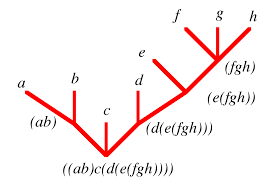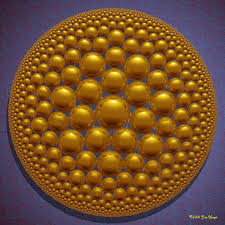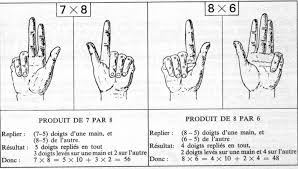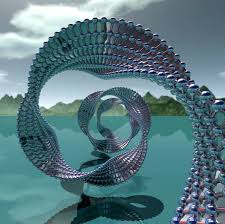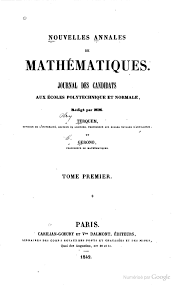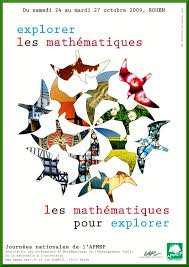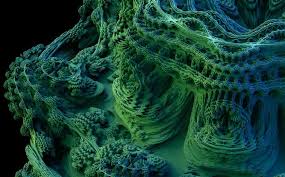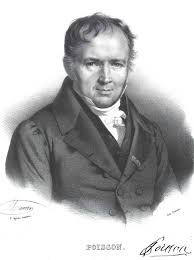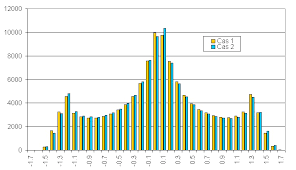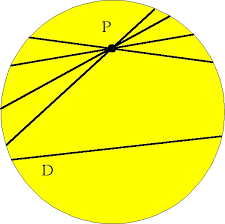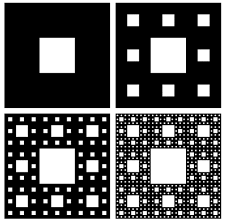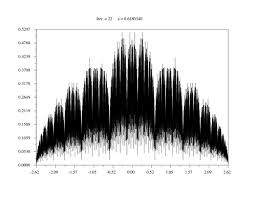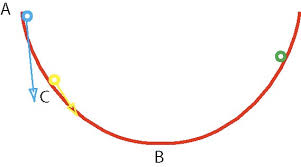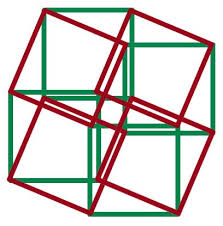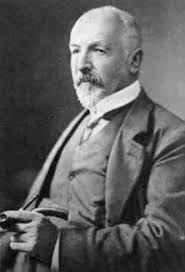09/09/2013
Master class : Around Torelli’s theorem for K3 surfaces
"Master class : Around Torelli’s theorem for K3 surfaces
IRMA, October 28 - November 1st, 2013
Aims and Scopes
The master classes are aimed at introducing (under)graduate students to current research areas in mathematics. The program is oriented to students that start or finish their master degree as well as to Ph.D. students. For previous master classes held in Strasbourg, see here.
The aim of this master class is to give a complete exposition of Torelli’s theorem for K3 surfaces and to present some applications of it. It will also include an introduction to hyperkähler manifolds and to the more recent version of Torelli’s theorem for hyperkähler manifolds due to Verbitsky.
Speakers
-Samuel Boissière
-Christian Liedtke
-Christian Lehn, Gianluca Pacienza and Pierre Py
-Julien Grivaux
-Misha Verbitsky
In addition, "pre-courses" will be organised before the main lectures (on october 25th and 26th). See herefor details.
Location
IRMA’s building is located in the main campus of Strasbourg University (see the map and the map) . The master classes will be held in the conference room of this building.
Financial support
Financial support for undergraduate and graduate students will be available. We should be able to cover the accomodation expenses, and maybe a limited number of travel expenses. We encourage all participants to seek financial support for travel from their home institutions. To register please send and email to masterclassk3 at gmail.com and if you are a student indicate one person of reference (thesis advisor for instance).
Organizers : C. Lehn, G. Pacienza, P. Py. The Master Classes are supported by the LABEX IRMIA.
1er novembre 2013 |
|
10h15 |
Misha Verbitsky - MoscouGlobal Torelli theorem for hyperkähler manifolds |
Dernière mise à jour le 22-08-2013"
Source :
15:54 Publié dans IRMA | Lien permanent | Commentaires (0) |  |
|  del.icio.us |
del.icio.us |  |
|  Digg |
Digg | ![]() Facebook
Facebook
92e rencontre entre mathématiciens et physiciens théoriciens : Entropie en mathématiques et en physique
IRMA, 26-28 septembre 2013
"La 92e rencontre entre mathématiciens et physiciens théoriciens aura pour thème : Entropie en mathématiques et en physique.
The 92th Encounter between Mathematicians and Theoretical Physicists will take place at Institut de Recherche Mathématique Avancée (University of Strasbourg and CNRS) on September 26-28, 2013. The theme will be : "Entropy in Mathematics and in Physics".
Organizers : Nicolas Juillet and Athanase Papadopoulos
The speakers are :
![]() Gérard Besson (Grenoble)
Gérard Besson (Grenoble) ![]() Freddy Bouchet (Lyon)
Freddy Bouchet (Lyon) ![]() Mauro Carfora (Pavie)
Mauro Carfora (Pavie) ![]() Djalil Chafaï (Paris)
Djalil Chafaï (Paris) ![]() Stéphane De Gérando (Paris)
Stéphane De Gérando (Paris) ![]() Rémi Peyre (Nancy)
Rémi Peyre (Nancy) ![]() Anders Karlsson (Genève)
Anders Karlsson (Genève) ![]() Christian Léonard (Nanterre)
Christian Léonard (Nanterre) ![]() Christian Maes (Leuven)
Christian Maes (Leuven) ![]() Gabriel Rivière (Lille)
Gabriel Rivière (Lille) ![]() Nessim Sibony (Orsay)
Nessim Sibony (Orsay) ![]() Karl-Theodor Sturm (Bonn)
Karl-Theodor Sturm (Bonn) ![]() Constantin Vernicos (Montpellier)
Constantin Vernicos (Montpellier)
The talks will be in English. Some of the talks will be survey talks intended for a general audience.
Graduate students and young mathematicians are welcome. Registration is required (and free of charge) at this link. Hotel booking can be asked for through the registration link.
For practical and other questions please contact the organizers : ![]() Nicolas Juillet : nicolas.juillet@math.unistra.fr
Nicolas Juillet : nicolas.juillet@math.unistra.fr ![]() Athanase Papadopoulos : athanase.papadopoulos@math.unistra.fr
Athanase Papadopoulos : athanase.papadopoulos@math.unistra.fr
The following programm is still subjet to modification :
26 septembre 2013 |
|
09h30 |
Nessim Sibony - OrsayEntropy in holomorphic dynamics.The entropy of a dynamical system is a number measuring how much the system is chaotic. More precisely it measures the growth of the number of orbits one can distinguish before time n, at every scale. It is an important invariant at the center of the theory of dynamical systems.One of the goals is to construct an invariant measure on the most chaotic part, to study its geometry,and the rates of expansion-contraction (Lyapounov-exponents). The abstract theory is well estabished, Oseledec, Pesin...To decide wether it applies in concrete examples is another story, most of the time out of reach. I will first recall Bowen's definition of entropy. Then I will discuss the notion in the context of holomorphic or meromorphic maps between compact Kähler manifolds.In particular it's relation with dynamical degrees, which describe the average expansion. This is strongly related to works by Gromov and Yomdin. Complex dynamics is a remarkable case where entropies can be computed explicitly in many situations.Measures of maximal entropy can be constructed, although the systems are not uniformly hyperbolic in general. I will also develop a notion of entropy for laminations by hyperbolic Riemann surfaces. In that case, we use the hyperbolic time. The finiteness of entropy is related to the transverse Hölder continuity of the Poincaré metric. The theory can be extended to cover the case of singular foliations on complex surfaces. The lecture is based on Joint works with T.C Dinh and V.A. Nguyen. |
10h30 |
Coffe break |
11h00 |
Rémi Peyre - NancyFree energy functional in an optimal-transportation settingWe consider a toy model for gravitational spontaneous symmetry breaking: in this model, the distribution of matter evolves according to a first-order equation, with a short-range attractive force which tends to make matter collapse, versus a diffusion term which tends to homogeneize density. It can be shown that this evolution is tantamount to the gradient flow of the free energy (hence involving entropy) in some infinite-dimensional Riemannian manifold defined in terms of “optimal transportation”—all of that shall be explained in detail. |
12h05 |
Lunch |
15h30 |
Anders Karlsson - GenèveA heat kernel approach to tree entropyThe number of spanning trees of graphs is an invariant of interest in electrical networks, statistical physics, theoretical chemistry and mathematics. I will discuss the asymptotics of the number of spanning trees in families of graphs, especially discrete tori. The constant in the lead term is called the tree entropy. This number as well as other constants in the asymptotics have interest in number theory: they are expressed in terms of certain Mahler measures, zeta functions, modular forms, and their special values. When there is a limiting continuous torus, its determinant of Laplacian appears. Based on joint work with G. Chinta and J. Jorgenson. I will also mention recent works by F. Friedli and J. Louis. |
16h30 |
Coffe break |
17h00 |
Christian Léonard - NanterreTBA |
18h30 |
Dinner - restaurant "Le petit bois vert" (petite France quarter). We start from the math institute at 18:00. |
27 septembre 2013 |
|
09h30 |
Karl-Theodor Sturm - BonnTBA |
10h30 |
Coffe break |
11h00 |
Freddy Bouchet - LyonLarge deviations and averaging for stochastic partial differential equations describing atmosphere dynamics.We consider the formation of large scale structures (zonal jets and vortices), in planetary atmosphere turbulence, within the barotropic quasi-geostrophic equations (the Ising model of geophysical turbulence). This model includes as a special case the 2D stochastic Navier-Stokes equations. We develop a theory based on tools of statistical physics (large deviations, averaging, kinetic theory) and field theory (instantons). We study the limit of a time scale separation between inertial dynamics on one hand, and the effect of forces and dissipation on the other hand. Using a kinetic theory approach, we prove that stochastic averaging can be performed explicitly in this problem, which is unusual in turbulent systems. It is then possible to integrate out all fast turbulent degrees of freedom, and to get explicitly an equation that describes the slow evolution of zonal jets. For some range of parameters, the dynamics has several attractors, with extremely rare and abrupt transition from one attractor to another. Using large deviation results, derived either from path integrals or from generalization of Freidlin--Wentzell theory, we compute the transition rates and transition trajectories between two attractors. |
12h00 |
Lunch |
14h00 |
Stéphane De Gérando - ParisIntroduction au Labyrinthe du temps.Exposé de 30 minutes. |
14h30 |
Constantin Vernicos - MontpellierVolume entropy of Hilbert geometries and approximability of convex bodies |
15h30 |
Gabriel Rivière - LilleEigenmodes of the wave equation, chaotic dynamical systems and entropy.We will discuss some properties of stationary solutions of the wave equation on a bounded euclidean domain (or more generally on a compact manifold). In other words, we will be concerned with the properties of the eigenfunctions of the Laplacian. Our main focus will be on domains for which the "free motion" of a particle (the geodesic flow) enjoys chaotic properties. We will explain how this chaotic feature influences the properties of the eigenfunctions in the high frequency limit. Finally, we will de! scribe some recent progresses have that been obtained on these questions thanks to the use of the so-called Kolmogorov-Sinai entropy. |
16h30 |
Coffee break |
17h00 |
Djalil Chafaï - ParisSome probabilistic aspects of Boltzmann entropy. |
18h30 |
Reception at the city hall of Strasbourg. We start at 18:00 from the place of the conference. |
28 septembre 2013 |
|
09h00 |
Mauro Carfora - PaviaThe Ubiquitous Entropy : from Geometrical Enumeration to Quantum Field TheoryI will review the ubiquitous and somewhat unexpected role that |
10h00 |
Gérard Besson - GrenobleTBA
|
11h00 |
Coffee break |
11h30 |
Christian Maes - LeuvenNonequilibrium entropiesIn contrast to the quite unique entropy concept useful for systems in (local) thermodynamic equilibrium, there is a variety of quite distinct nonequilibrium entropies, reflecting different physical points. We disentangle these entropies as they relate to heat, fluctuations, response, time-asymmetry, variational principles, monotonicity, volume contraction or statistical forces. However, not all of those extensions yield state quantities as understood thermodynamically. At the end we sketch how |
Dernière mise à jour le 6-09-2013"
Lire la suite :
15:53 Publié dans IRMA | Lien permanent | Commentaires (0) |  |
|  del.icio.us |
del.icio.us |  |
|  Digg |
Digg | ![]() Facebook
Facebook











